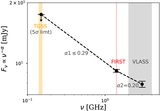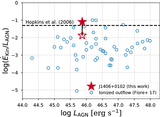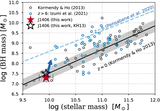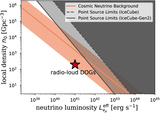Image Details
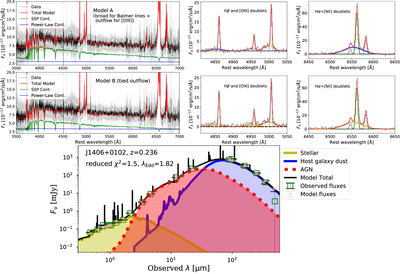
Caption: Figure 2.
(Top row) Left-hand figure shows the SDSS spectrum of J1406 with fitting result using GELATO for model A: untied velocity shift and FWHM for blueshifted [O III] lines and a broad component of each Balmer line. SDSS spectrum is shown in black with 3σ uncertainty in gray. The simple stellar population (SSP) continuum and power-law continuum are plotted in green and blue, respectively. The overall fit is shown in red, which includes emission-line models with SSP continuum and power-law continuum. (Top middle and right) SDSS spectrum fitting results at Hβ–[O III] range and Hα–[N II] range. The spectrum is plotted as a gray line with the narrow components (gray or green dashed line), and the overall fit is shown in red. Broad Hα and Hβ Gaussian components are plotted in blue, and blueshifted [O III] component is plotted in orange. (Middle row) Same figure with top panel but with a different model setup (model B): tied velocity shift and FWHM for [O III] and Balmer lines. Middle and right-hand figure shows broad Hα and Hβ Gaussian components and blueshifted [O III] component is plotted in orange, which have tied velocity shift and FWHM. (Bottom row) SED fitting result of J1406. The red dotted line represents the AGN direct and dust emission. The blue solid line represents the dust emission from the host galaxy. The yellow line represents the stellar emission from the host galaxy . The black solid line is the combined one of dust, stellar, nebular, and AGN.
Copyright and Terms & Conditions
© 2025. The Author(s). Published by the American Astronomical Society.



